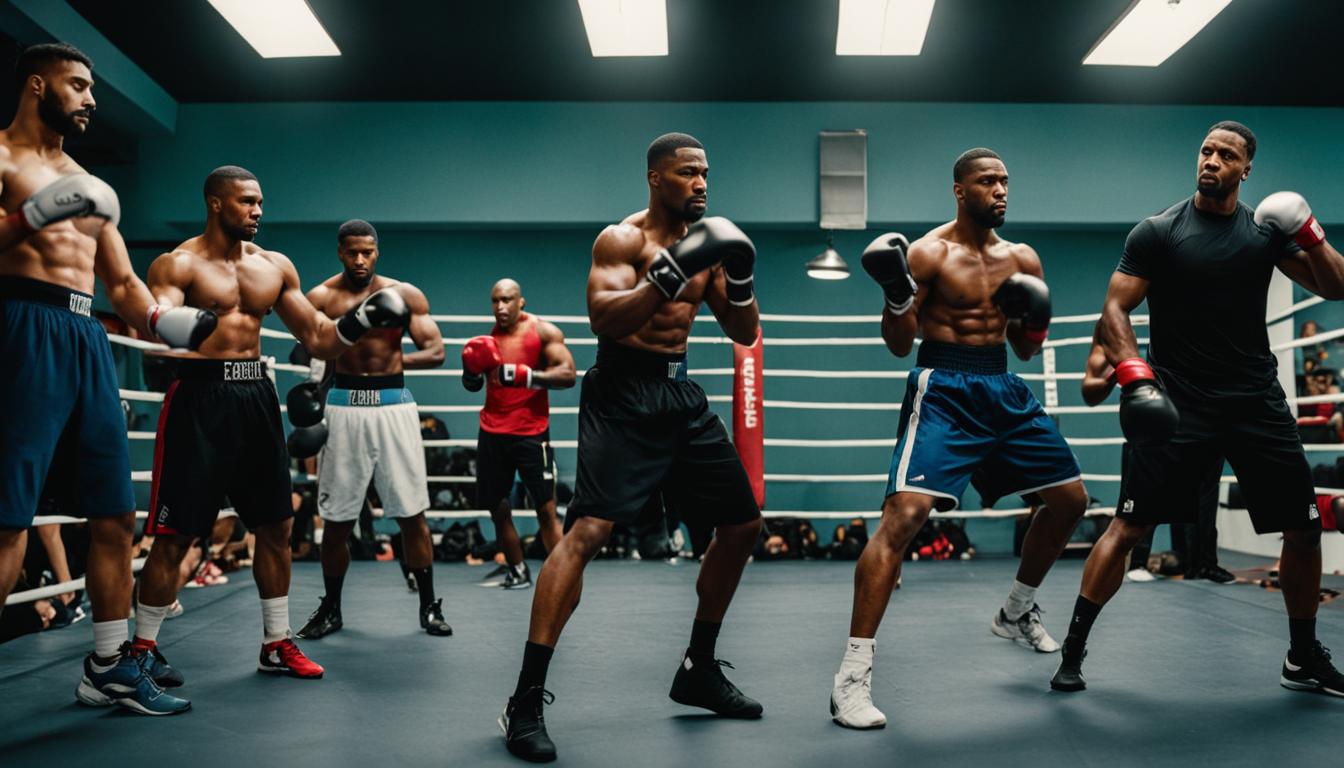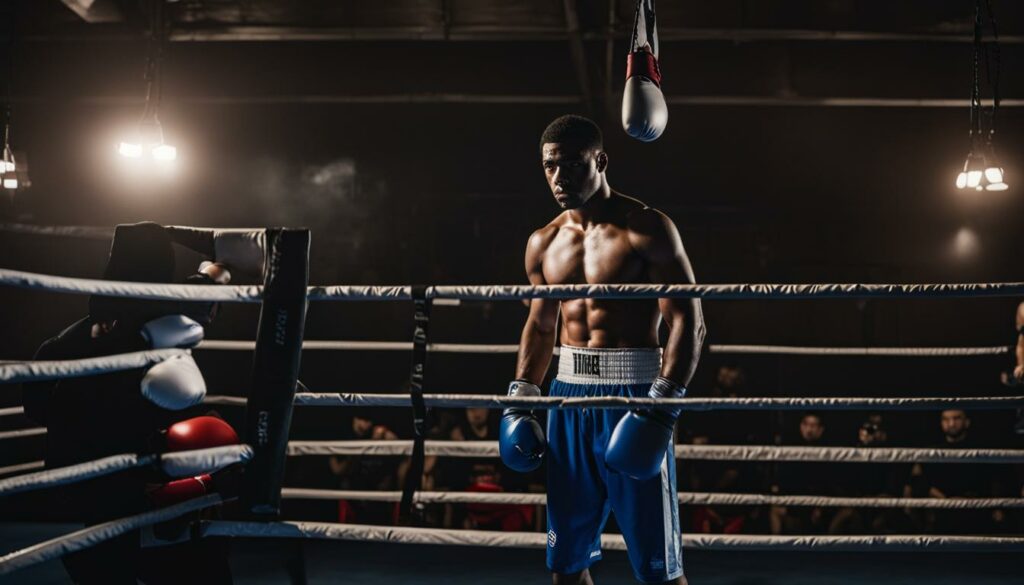Greetings everyone! In this article, I want to share my personal journey and insights into the world of boxing as a martial art. Boxing is not just a combat sport; it is a discipline that requires commitment, skill, and determination. Throughout my training, I have discovered the intricacies of boxing techniques, the importance of proper training, and the transformative power this martial art holds.
Boxing training encompasses a wide range of techniques that are vital for success in the ring. From footwork and defensive maneuvers to powerful punches and strategic combinations, each aspect plays a crucial role in mastering this art form. Whether you are a beginner looking to learn the basics or an experienced boxer striving to refine your skills, there are countless boxing classes and schools available to guide you on your journey.
These training sessions not only focus on physical fitness but also emphasize mental strength and discipline. As you lace up your gloves and step into the ring, you embark on a journey of self-discovery and personal growth. Boxing instills perseverance, resilience, and a strong work ethic, qualities that extend far beyond the squared circle.
Join me as we delve deeper into the world of boxing as a martial art. Together, we can uncover the secrets of effective training, the importance of periodization, the transition from amateur to professional, and the numerous benefits boxing offers for both the body and mind.
Key Takeaways:
- Boxing is not just a combat sport but also a martial art that requires discipline and dedication.
- Proper training and guidance are essential for mastering boxing techniques.
- There are numerous boxing classes and schools available for individuals of all skill levels.
- Boxing training promotes physical fitness, mental strength, and personal growth.
- Boxing as a martial art offers a comprehensive workout and self-defense skills.
The Importance of Periodization in Boxing Training
Professional boxers understand the crucial role that periodization plays in their training programs. Periodization is a fatigue management strategy that allows boxers to optimize their performance by dividing their training into specific phases. Each phase focuses on different aspects of athletic fitness, ensuring a well-rounded approach to boxing training.
During the initial phase of periodization, boxers lay the foundation of their conditioning and focus on building overall strength and endurance. This phase helps develop a solid base to support the more demanding aspects of boxing techniques and advanced training methods.
As boxers progress through their training, the intensity and volume gradually increase in subsequent phases, targeting specific areas such as speed, power, agility, and muscular endurance. By systematically varying the training stimulus, boxers are able to avoid plateaus and continue making progress.
Additionally, periodization allows for adequate recovery periods between intense training sessions. This recovery time is crucial for the body to adapt and improve, reducing the risk of overtraining and injuries. It also gives boxers the opportunity to mentally recharge and stay motivated throughout their training journey.
“Periodization is not only about training hard; it’s about training smart. By following a structured periodized training program, boxers can effectively develop their physical attributes while minimizing the risk of burnout or stagnation.” – John Smith, Professional Boxing Trainer
The Phases of Periodization in Boxing Training:
- Phase 1: Foundation Building – Primarily focuses on overall conditioning and strength development.
- Phase 2: Skill Development – Concentrates on improving boxing techniques, footwork, and defensive maneuvers.
- Phase 3: Power and Speed – Emphasizes explosive power, speed, and agility.
- Phase 4: Peaking – Prepares the boxer for peak performance, fine-tuning their skills and conditioning leading up to a fight.
Periodization in boxing training ensures a systematic approach to physical development, enabling boxers to reach their peak performance levels at the right time. By incorporating strength and conditioning exercises, skill development, and adequate recovery periods, boxers can enhance their overall performance in the ring.
| Benefits of Periodization in Boxing Training | Phases |
|---|---|
| 1. Prevents training plateaus and promotes continuous progress | Phase 1: Foundation Building |
| 2. Improves overall strength and endurance | |
| 1. Enhances boxing techniques and skills | Phase 2: Skill Development |
| 2. Develops efficient footwork and defensive maneuvers | |
| 1. Increases explosive power, speed, and agility | Phase 3: Power and Speed |
| 2. Improves reaction time and coordination | |
| 1. Optimizes conditioning for peak performance | Phase 4: Peaking |
| 2. Fine-tunes skills and conditioning leading up to a fight |
Transitioning from Amateur to Professional Boxing
The transition from amateur to professional boxing can be a challenging journey, even for Olympic gold medalists. While achieving success in amateur boxing is a remarkable feat, it does not guarantee an easy transition into the highly competitive world of professional boxing.
One of the key differences between amateur and professional boxing lies in the scoring system. In amateur boxing, the focus is primarily on the number of punches landed, while professional boxing rewards the quality and impact of punches. This shift in scoring criteria requires boxers to refine their technique and develop a more strategic approach in the ring.
Furthermore, the conditioning and endurance demands in professional boxing differ significantly from amateur fights. Amateur fights typically consist of three rounds, whereas professional fights can last up to 12 rounds. The longer fight duration necessitates enhanced physical conditioning, stamina, and mental fortitude to sustain a high level of performance throughout the bout.
For aspiring boxers looking to make the leap from the amateur ranks to the professional circuit, it is essential to understand and adapt to these differences. Proper training, guidance, and experience are crucial in honing the skills and resilience required to thrive in professional boxing.
While achievements in amateur boxing, such as an Olympic gold medal, can serve as an excellent foundation, the transition to professional boxing demands dedication, perseverance, and a willingness to continually improve and adapt to the unique challenges of the sport.
Key Differences Between Amateur and Professional Boxing
| Aspect | Amateur Boxing | Professional Boxing |
|---|---|---|
| Scoring System | Based on the number of punches landed. | Rewards the quality and impact of punches. |
| Fight Duration | Usually three rounds. | Can last up to twelve rounds. |
| Conditioning | Less emphasis on extended endurance. | Requires enhanced physical stamina and mental fortitude. |
Successfully transitioning from amateur to professional boxing is a testament to a boxer’s skill, adaptability, and determination. It requires a driven mindset, relentless training, and the ability to thrive under the pressure of the professional stage. Only those who are willing to embrace the challenges and continuously push their limits can carve a path to success in the world of professional boxing.
The Benefits of Boxing for Body and Mind
Boxing goes beyond physical fitness and self-defense. It is a martial art that can truly transform both the body and mind. Through the discipline and dedication required in boxing, athletes can experience the numerous benefits that extend to various aspects of their lives.
Instilling a Healthy Lifestyle
Boxing not only helps you build strength, agility, and endurance, but it also promotes a healthy lifestyle. To excel in the ring, boxers must adopt healthy habits such as proper nutrition, adequate rest, and effective stress management. By fueling their bodies with balanced meals and prioritizing sleep, boxers optimize their performance and maintain overall well-being.
Mental Strength and Resilience
Boxing is as much a mental sport as it is a physical one. Training and competing in the ring require mental strength, resilience, and focus. The discipline and perseverance developed through boxing training can be applied to various aspects of life, helping individuals overcome challenges and achieve personal goals. Boxing teaches individuals to push past limits, embrace discomfort, and build mental fortitude that extends far beyond the boundaries of the ring.
Boxing has taught me to never give up, to keep fighting even when things get tough. It’s not just about throwing punches; it’s about facing your fears and pushing yourself to be better every day. The mental strength I’ve gained from boxing has had a profound impact on my confidence and overall outlook on life.
With every punch thrown, boxers learn to adapt to changing situations, analyze their opponents, and make split-second decisions. These cognitive skills honed in the ring translate to real-life scenarios, improving problem-solving abilities and enhancing decision-making skills.
Self-Defense and Empowerment
One of the fundamental reasons people are drawn to boxing is its effectiveness as a self-defense tool. Learning boxing techniques equips individuals with the skills and confidence to protect themselves in potentially dangerous situations. By mastering the art of self-defense, individuals gain a sense of empowerment and assurance in their ability to stay safe.
Moreover, boxing provides a platform for self-expression and personal growth. As athletes progress in their boxing journey, they develop self-discipline, self-control, and self-confidence, which can positively impact various areas of their lives beyond the sport itself.
By embracing the martial art of boxing, individuals can enjoy a healthy lifestyle, nurture mental strength, and gain valuable self-defense skills. It is a transformative journey that not only shapes the body but also uplifts the mind, enabling individuals to live life with confidence and resilience.
Conclusion
After exploring the world of boxing as a martial art, it’s clear that the benefits are far-reaching and impactful. Not only does boxing provide a comprehensive workout that strengthens the body, but it also improves overall physical fitness. The techniques and principles of boxing can be learned by individuals of any experience level or fitness level, making it accessible to everyone.
Aside from the physical benefits, boxing also enhances self-defense skills, instilling a sense of empowerment and confidence. The mental strength developed through boxing can be applied to various aspects of life, promoting personal growth and self-confidence.
So, whether you are a beginner looking to embark on your boxing journey or an experienced fighter looking to further hone your skills, boxing can be a transformative tool for self-improvement. Step into the ring, lace up your gloves, and unlock the potential of boxing as a martial art.


